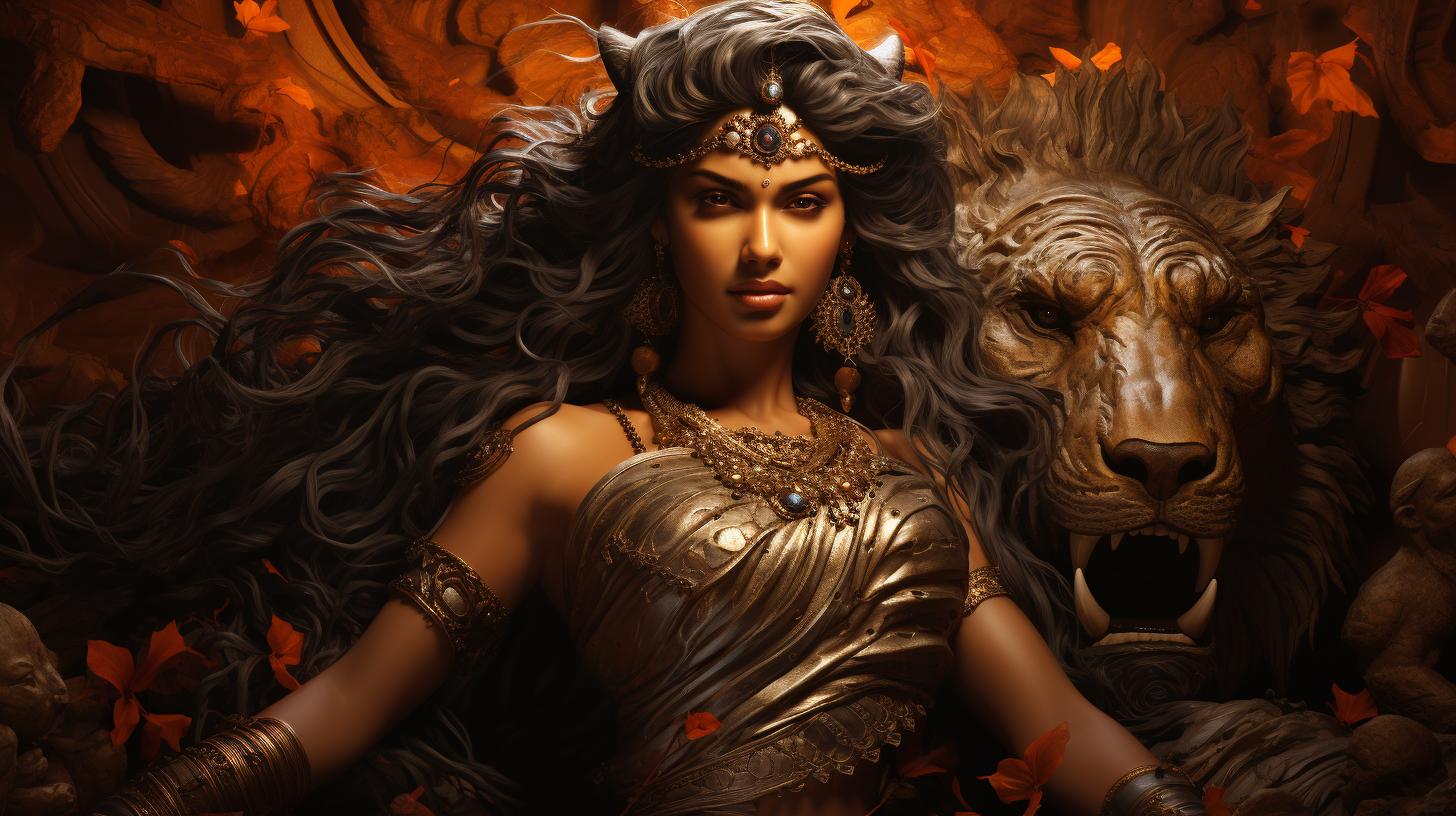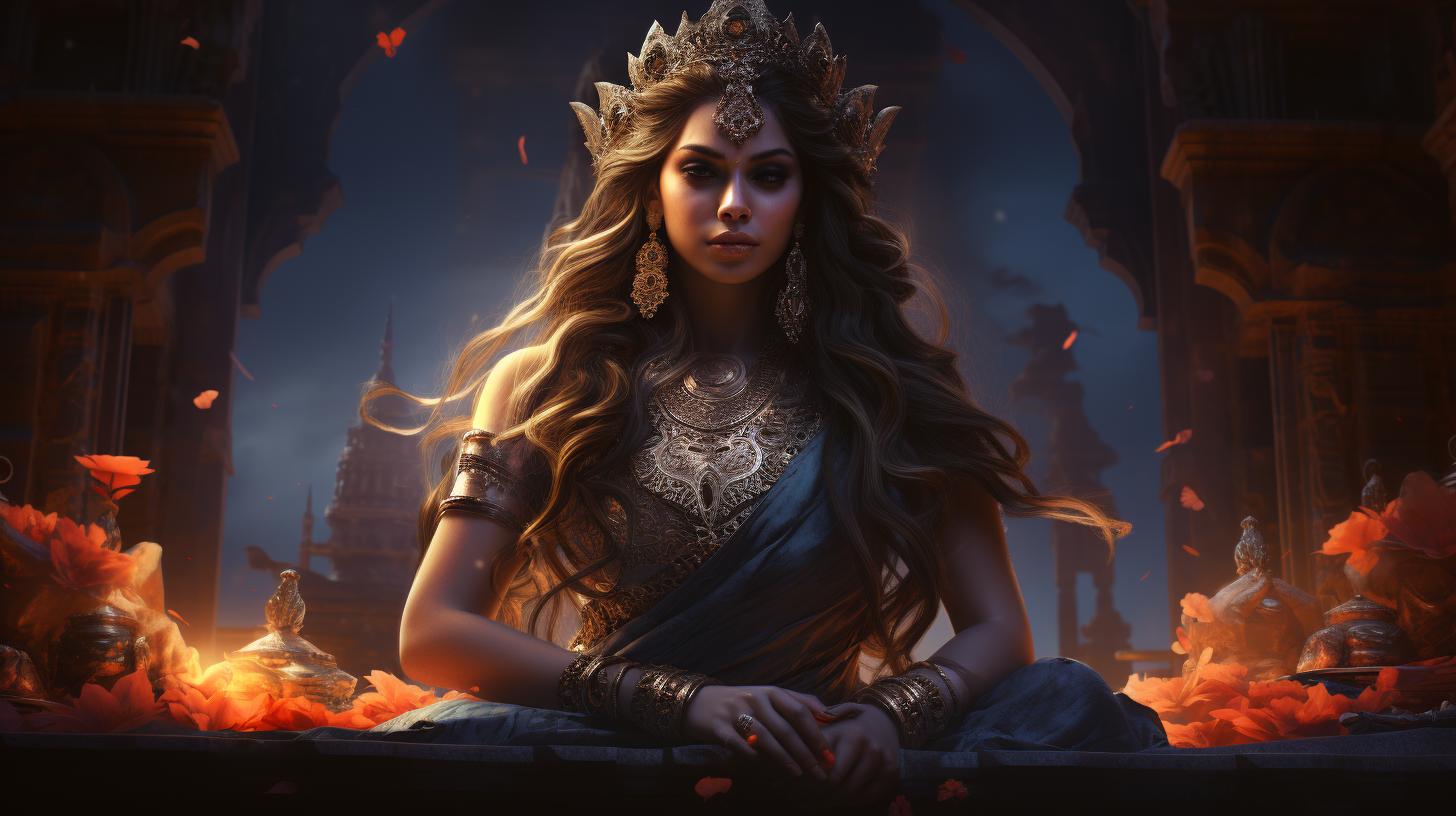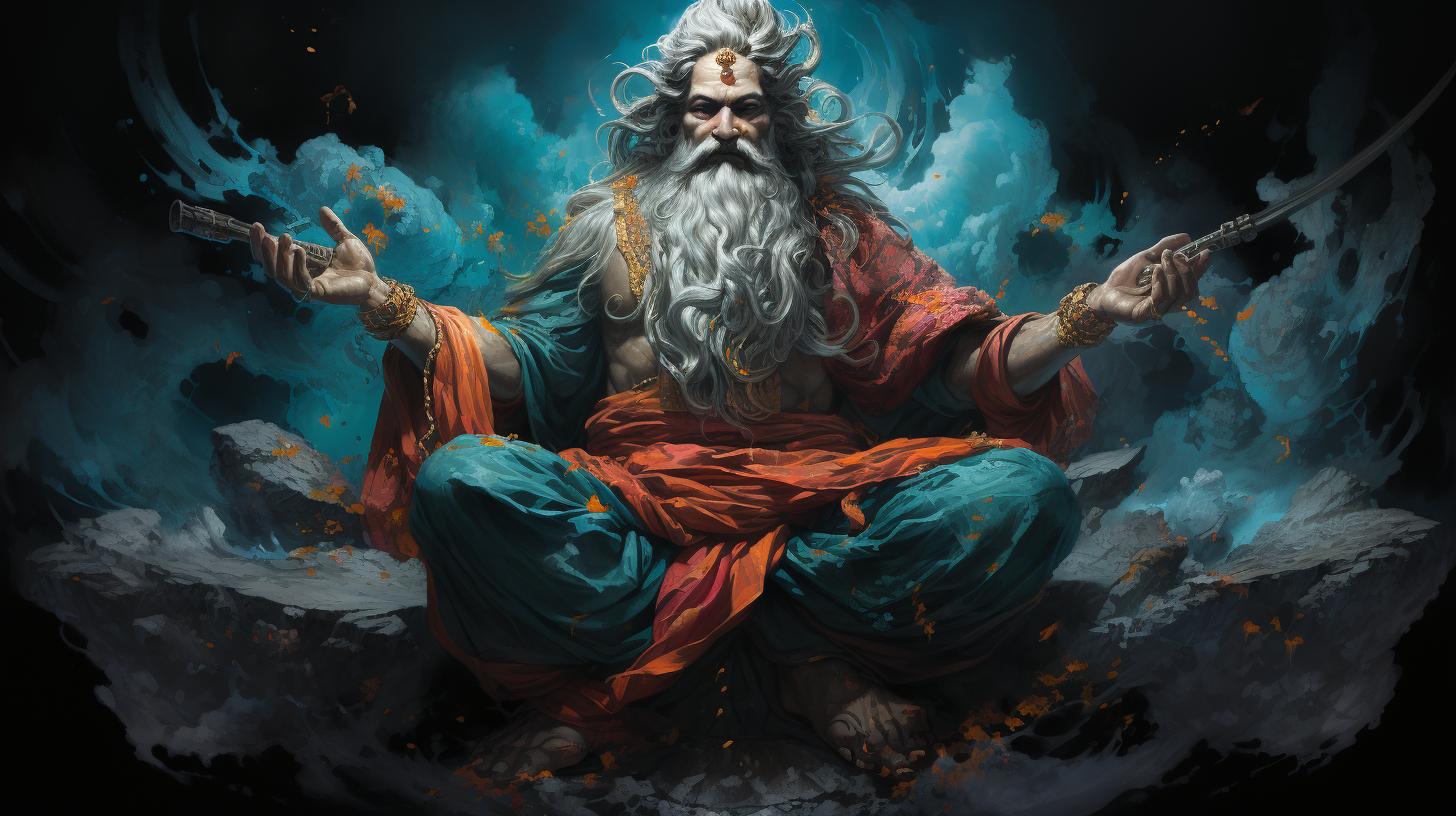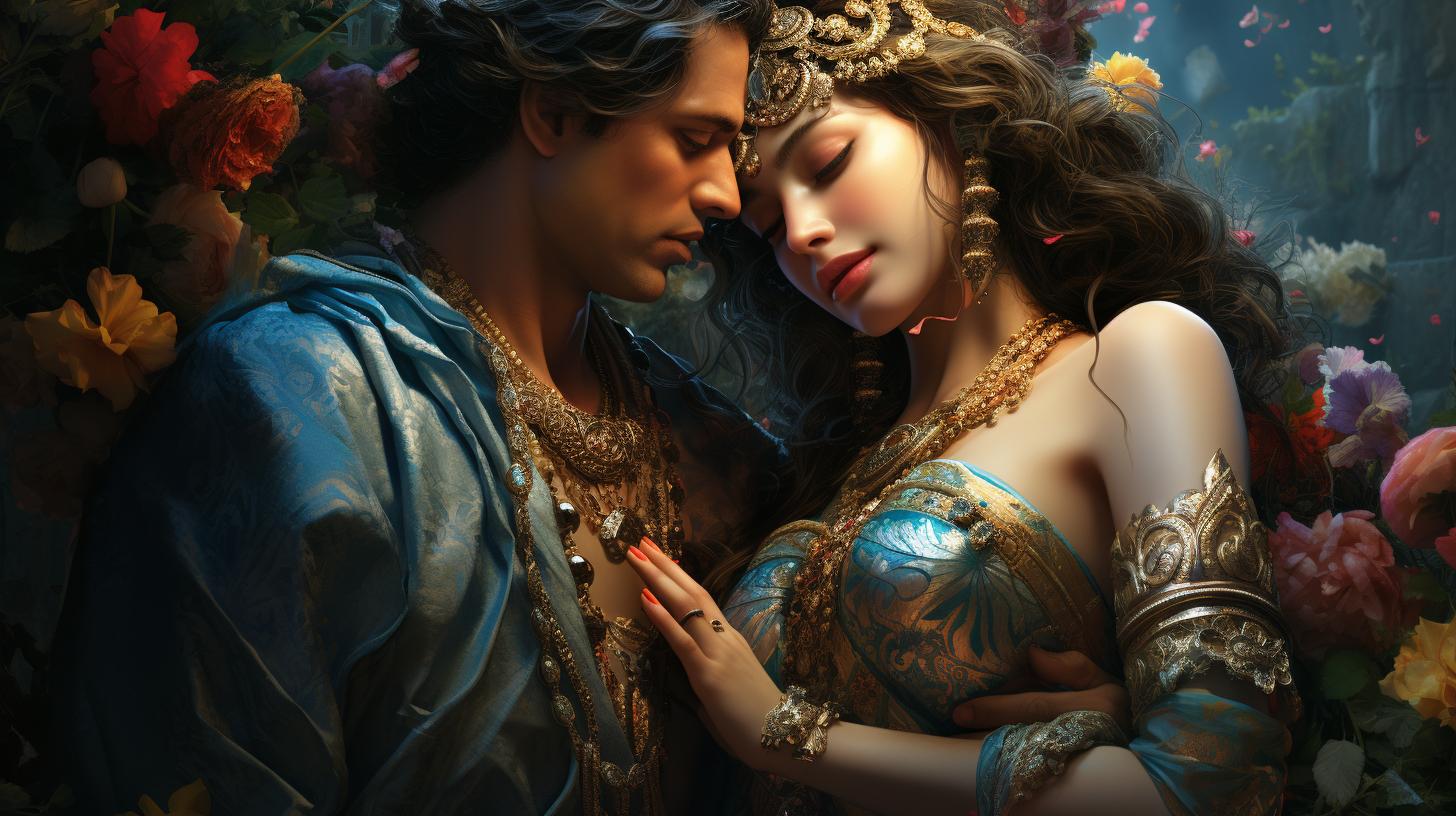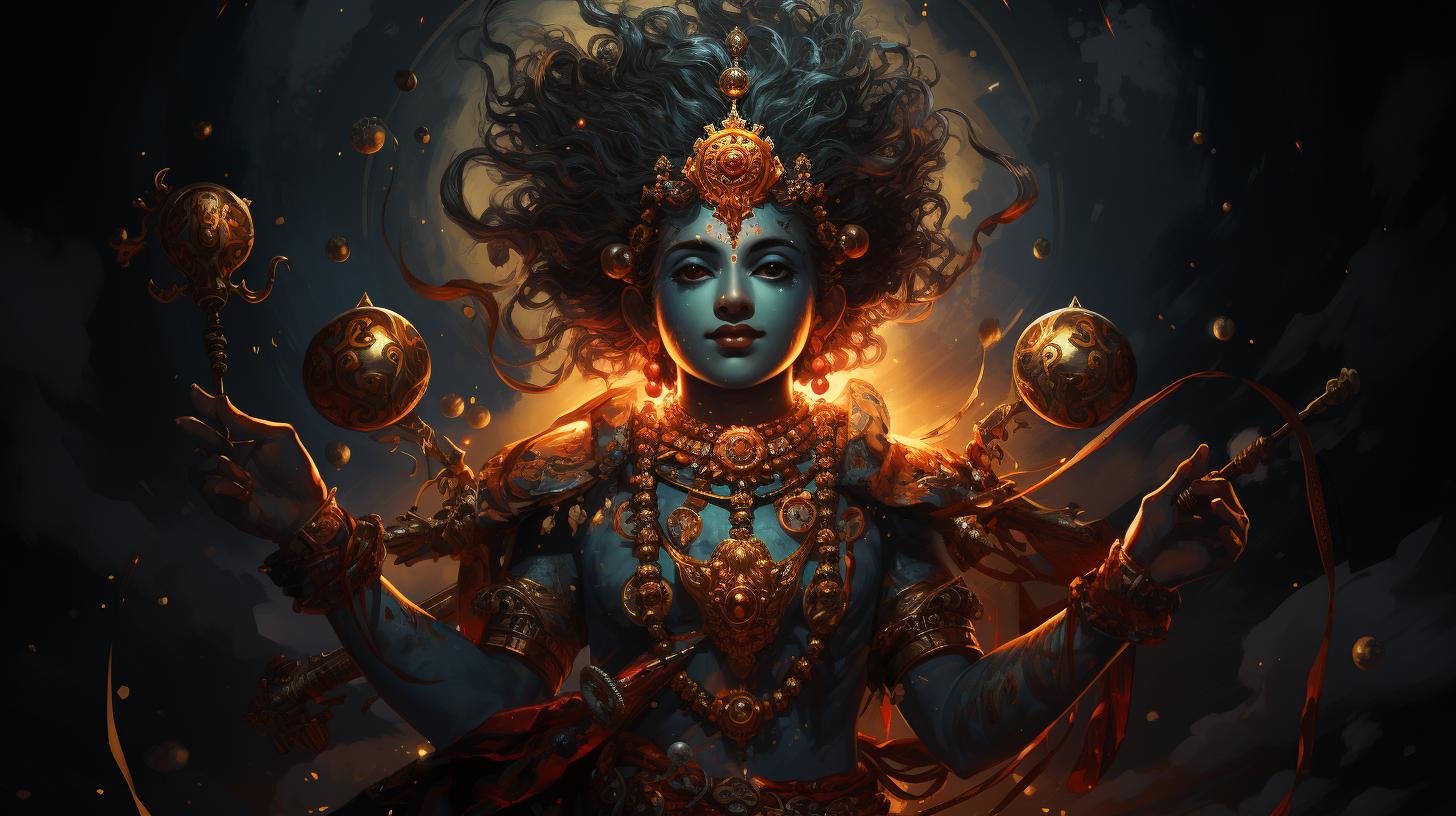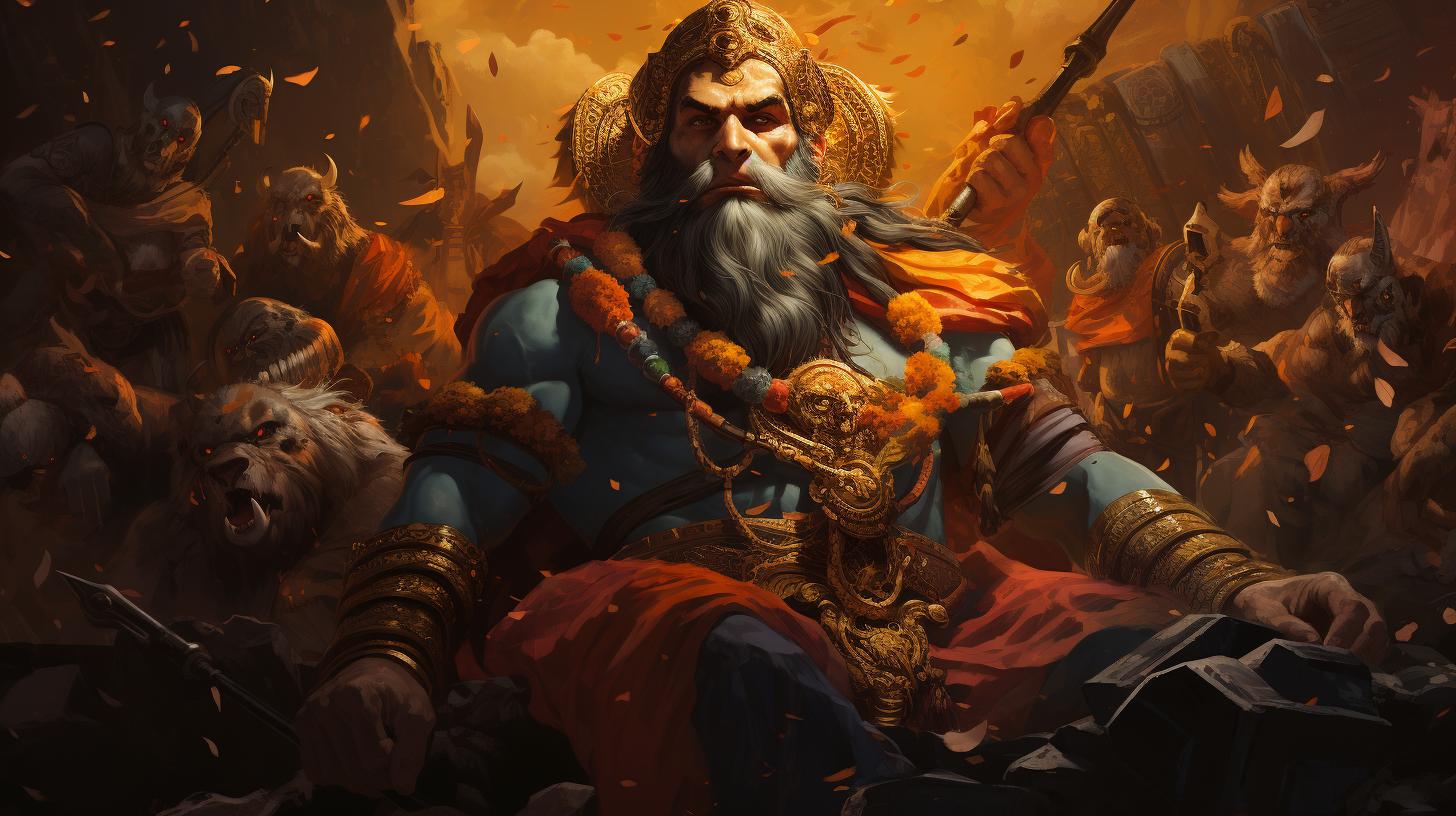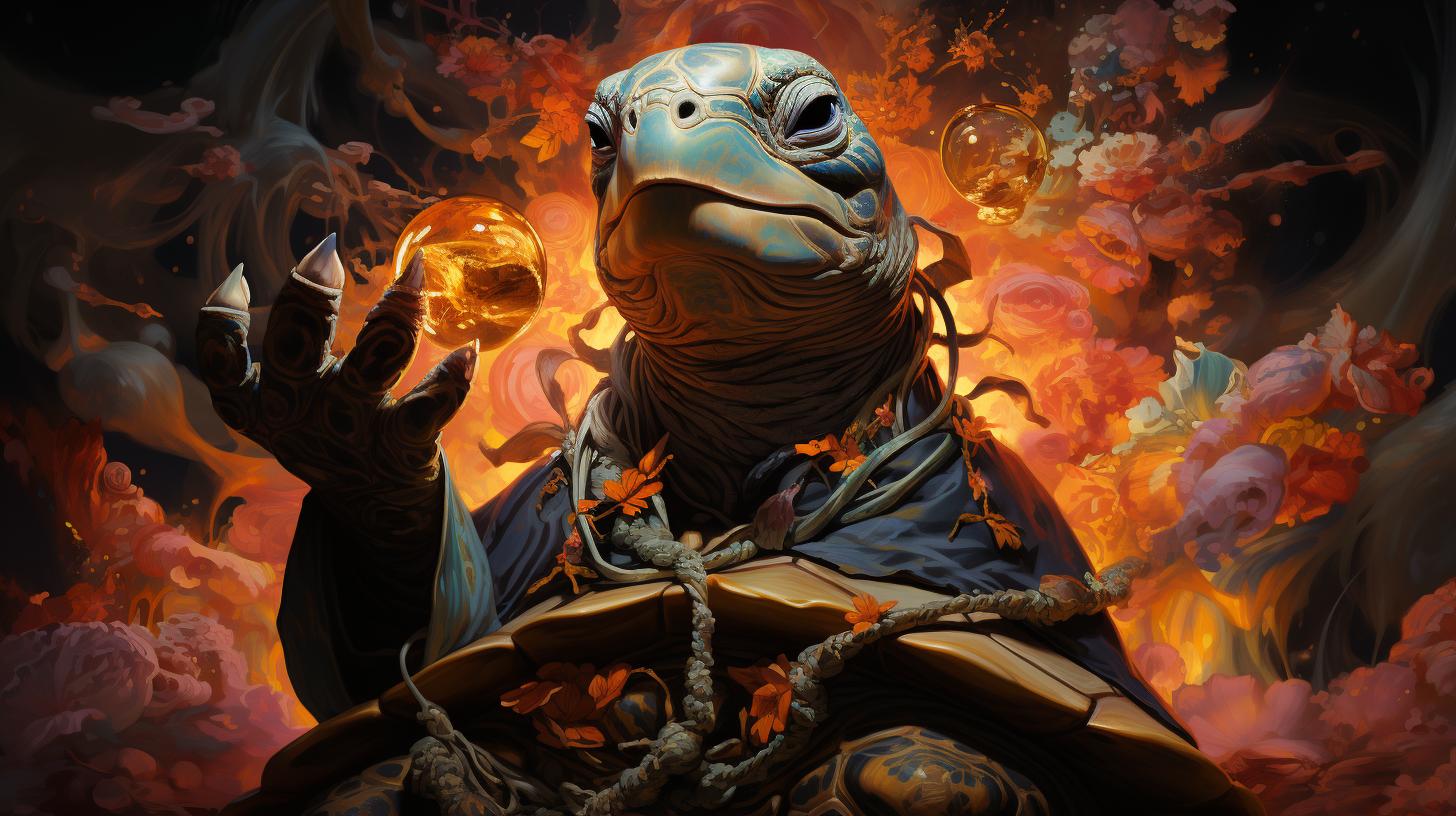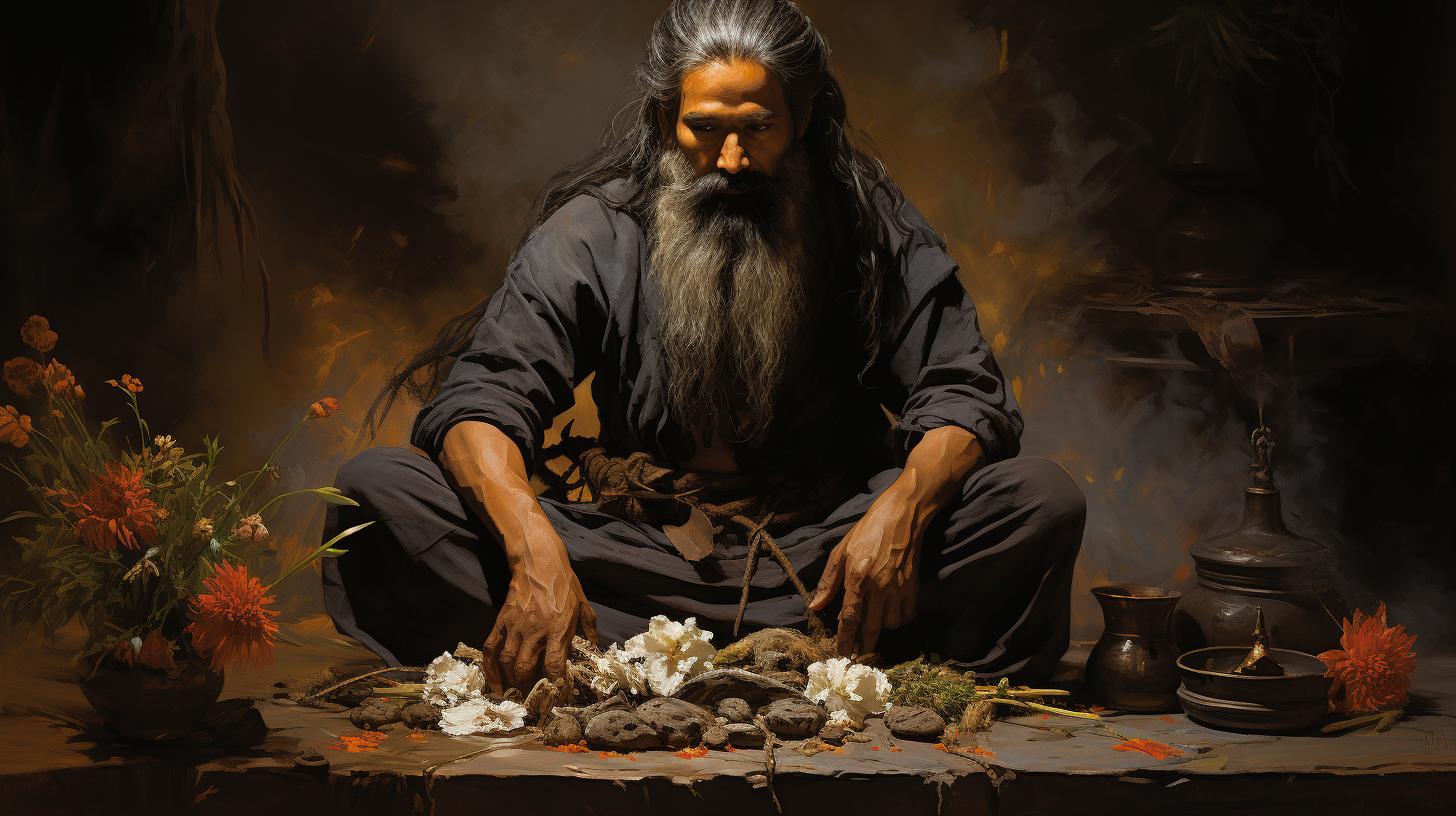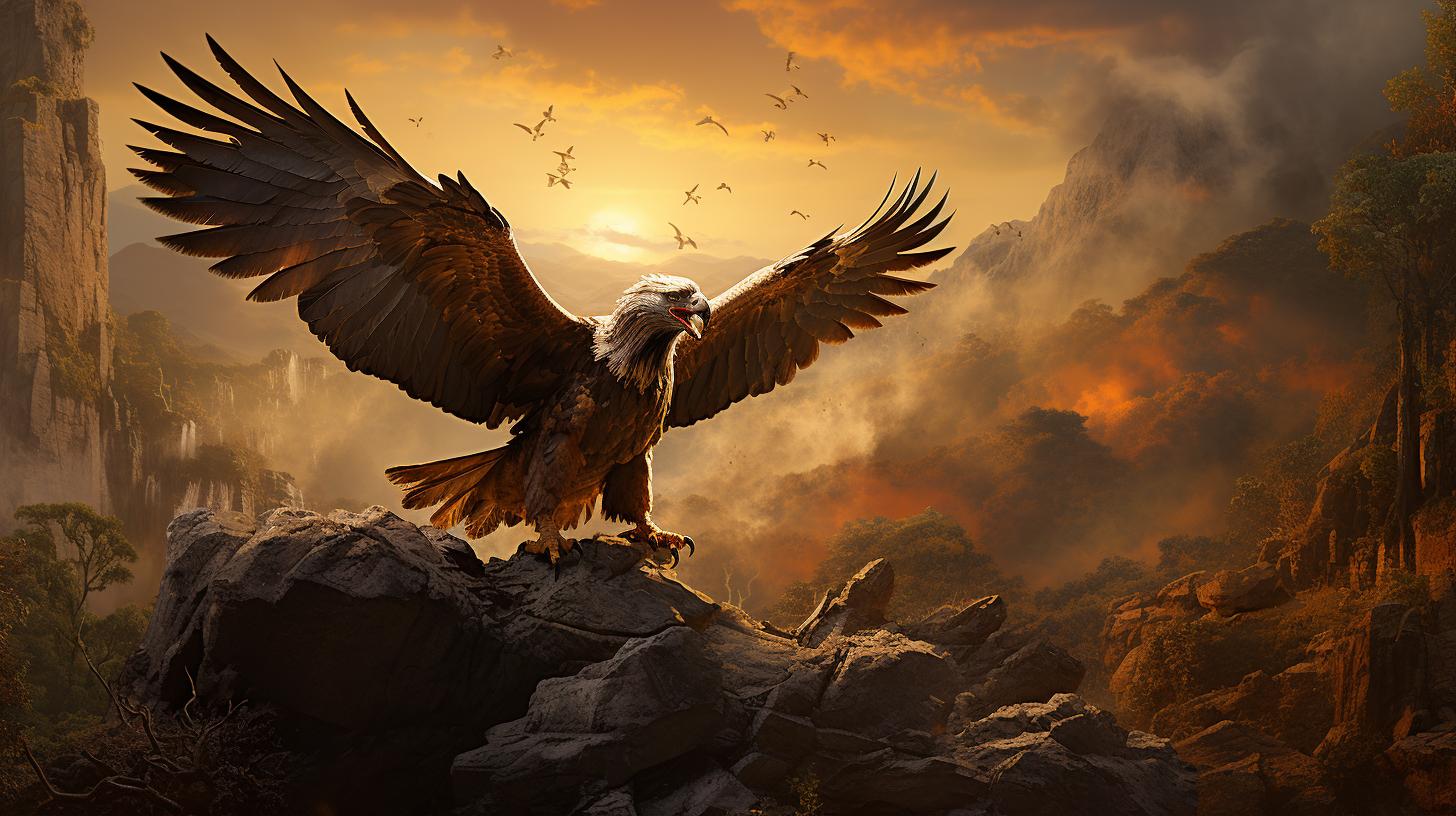Indian Goddess Durga Story: Unveiling the Powerful Hindu Deity’s Legends
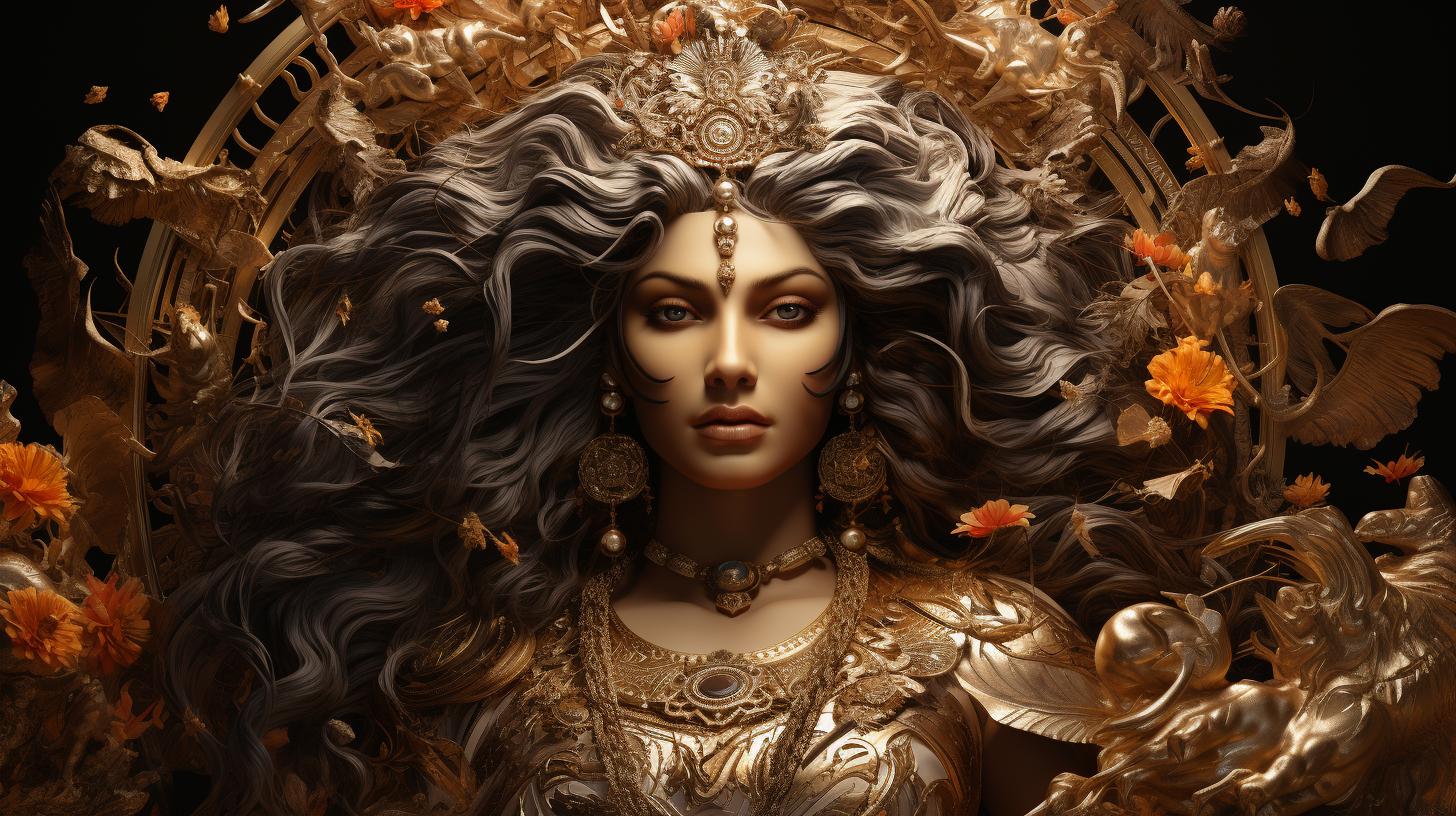
The Indian goddess Durga is revered in Hindu tradition as a powerful protector, embodying strength, motherhood, and the capability to vanquish evil. According to legend, she was created by Brahma, Vishnu, Shiva, and the lesser gods to defeat the fierce demon Mahishasura.
Durga is depicted riding a lion with multiple arms, each wielding a weapon bestowed by the gods. Her story, celebrated in festivals like Durga Puja and Navaratri, showcases her various incarnations like Kali and Bhavani, symbolizing different aspects and purposes.
Through her mythology and festivals, Durga holds significant importance in the Hindu tradition.
The Origins of the Hindu Goddess Durga
The origins of the revered Hindu goddess Durga can be traced back to the divine collaboration of Brahma, Vishnu, Shiva, and the lesser gods. According to the legends, these powerful deities united their energies and created Durga to confront a formidable demon known as Mahishasura.
Creation by Brahma, Vishnu, Shiva, and the Lesser Gods
In the grand design of mythology, Brahma, Vishnu, Shiva, and the lesser gods combined their individual powers and attributes to shape the formidable form of Durga. Each deity contributed their unique qualities to form a goddess who would possess extraordinary strength and ability.
Defeating the Demon Mahishasura
The primary purpose of Durga’s creation was to combat the evil demon Mahishasura. Armed with ferocious powers and weapons bestowed by Brahma, Vishnu, Shiva, and others, Durga valiantly engaged in an epic battle against Mahishasura.
With her unwavering determination and divine might, she vanquished the demon, restoring balance and harmony to the world.
The Divine Powers of Goddess Durga
Goddess Durga, a prominent deity in Hinduism, possesses divine powers that are revered and celebrated in various facets. She embodies multiple aspects, serving as a maternal figure and protector of her devotees, while also symbolizing strength, motherhood, and warfare.
Furthermore, she is known for her role in the destruction of evil and the elimination of malice from the world.
Durga assumes the role of a compassionate mother figure, providing solace and protection to her devotees. As they face challenges and adversities, she offers them refuge and guidance, bestowing upon them the strength to overcome obstacles.
Her benevolence and maternal nature make her a source of comfort, offering sanctuary and assurance amidst life’s struggles.
Associations with Strength, Motherhood, and Warfare
Goddess Durga embodies strength, making her an embodiment of shakti or female power. She represents the potency that women possess and holds a significant place in the pantheon as a symbol of fierceness and determination.
Additionally, her association with motherhood emphasizes her nurturing side, reminding individuals of the compassionate and loving aspects of femininity. Furthermore, Durga’s connection to warfare highlights her ability to protect and defend against forces of darkness and destruction.
Destruction of Evil and Elimination of Malice
Another crucial aspect of Goddess Durga’s divine powers involves her ability to destroy evil and eliminate malice from the world. With her arsenal of weapons bestowed by the gods, she engages in battle against demonic forces and negative energies, safeguarding humanity from the clutches of darkness and establishing harmony.
Her unwavering determination and ferocity serve as a beacon of hope, inspiring individuals to confront and conquer their inner demons.
Goddess Durga’s Iconography and Symbols
Goddess Durga, an influential deity in Hinduism, is represented through various symbols and iconography that hold deep significance in her worship and mythology.
Riding upon a Lion with Multiple Arms
Durga is often depicted riding upon a majestic lion, symbolizing her strength, power, and fearlessness. This imagery represents her ability to overcome obstacles and protect her devotees. It signifies her dominance over both the physical and spiritual realms.
In addition to her commanding stance, Durga is shown with multiple arms, typically eight or ten in number. Each arm holds a specific weapon, bestowed upon her by various gods. This unique portrayal illustrates her extraordinary capabilities and her ability to wield immense power.
The weapons held by Durga in her multiple arms are symbolic of the divine energies gifted to her by the gods Brahma, Vishnu, Shiva, and others. These weapons include the trident, sword, bow and arrow, discus, mace, and conch shell, among others.
Each weapon represents a specific aspect of her strength and prowess in battle, as well as her ability to dispel evil forces and protect her devotees from harm. The diverse range of weapons highlights her versatility and her role as a fierce warrior goddess.
Triyambake – The Three-Eyed Goddess
Durga is often referred to as Triyambake, which means “the three-eyed.” Each of her three eyes symbolizes different aspects and powers. The left eye represents desire and the moon, the right eye embodies action and the sun, while the central eye signifies enlightenment and knowledge.
This three-eyed representation emphasizes Durga’s omniscience and her ability to perceive the past, present, and future.
The three eyes of Durga also symbolize her vigilance in guarding her devotees and her ability to see through illusion and deceit.
This vision grants her the power to discern truth and maintain cosmic balance.
- • The lion represents Durga’s strength, fearlessness, and authority.
- • Multiple arms indicate her divine power and ability to simultaneously engage in various actions.
- • The weapons held by Durga symbolize her capability to vanquish evil forces.
- • Triyambake, the three-eyed goddess, exemplifies her omniscience and perception of the past, present, and future.
Understanding the rich iconography and powerful symbols associated with Goddess Durga enables devotees to connect and invoke her divine presence, seeking her protection, guidance, and blessings.
Various Incarnations of Goddess Durga
The powerful Hindu goddess Durga takes on different incarnations, each with unique powers and purposes. These incarnations are revered in Hindu mythology and are worshipped for their specific attributes and abilities.
Let’s explore some of the significant incarnations:
Kali
Kali is the fierce form of Durga, known for her wild and untamed energy. She represents destruction and is often depicted with a fierce expression, standing on a demon and wielding weapons.
Bhagvati
Bhagvati is the embodiment of divinity and cosmic energy. She is worshipped as the source of all creation and the keeper of universal order.
Bhavani
Bhavani is the compassionate form of Durga, symbolizing love and kindness. She is believed to shower devotees with blessings and protect them from harm.
Ambika
Ambika, the divine mother, represents fertility, abundance, and nourishment. She is worshipped for the blessings she bestows upon her devotees, providing sustenance and prosperity.
Lalita
Lalita is the playful form of Durga, representing beauty and grace. She is worshipped for her enchanting presence, believed to bring joy and harmony.
Gauri
Gauri is the gentle and benevolent form of Durga, symbolizing purity and auspiciousness. She is worshipped for marital bliss and fertility.
Kandalini
Kandalini is the embodiment of spiritual energy and Kundalini Shakti. She represents the dormant spiritual power within every individual, waiting to be awakened.
Java
Java is the form of Durga associated with intelligence, wisdom, and learning. She is revered for her knowledge and guidance in the pursuit of wisdom.
Meenakshi
Meenakshi is the goddess with fish-like eyes, representing beauty and grace. She is worshipped as the divine consort of Lord Shiva, known for her nurturing nature.
Kamakshi
Kamakshi is the goddess of love, desire, and devotion. She is worshipped to seek blessings for a successful and harmonious love life.
Specific Powers and Purposes of Each Incarnation
- Kali brings liberation from negative forces and the destruction of ego.
- Bhagvati grants wisdom, strength, and protection from evil influences.
- Bhavani bestows love, compassion, and healing to devotees.
- Ambika offers fertility, abundance, and nurturing qualities.
- Lalita brings joy, beauty, and harmony to the lives of her worshippers.
- Gauri blesses devotees with marital bliss, fertility, and prosperity.
- Kandalini awakens spiritual energy and guides seekers on the path of enlightenment.
- Java provides knowledge, intelligence, and guidance in the pursuit of wisdom.
- Meenakshi embodies beauty, grace, and divine feminine qualities.
- Kamakshi grants blessings for love, desire, and devotion.
These incarnations of Goddess Durga hold immense significance in Hindu tradition, attracting devotees seeking various blessings and guidance in their lives.
Celebrating Goddess Durga in Hindu Festivals
Celebrations of Goddess Durga in Hindu festivals hold immense significance in showcasing devotion and reverence towards the divine deity. These festivals bring communities together to pay homage to the powerful goddess and commemorate her victories over evil forces.
Let’s delve into some of the prominent festivals dedicated to Goddess Durga:
Durga Puja
Durga Puja, one of the most awaited festivals in the eastern region of India, is a grand celebration held in honor of Goddess Durga. Elaborate decorations, mesmerizing idols, colorful pandals (temporary structures), and mesmerizing cultural events mark this festival.
Spanning over several days, devotees immerse themselves in prayers, rituals, and joyous festivities, culminating with the immersion of the Durga idol in holy rivers.
Durga Ashtami
Also known as Maha Ashtami, Durga Ashtami is a momentous day during the Navaratri festival dedicated to the worship of Goddess Durga. Devotees observe rigorous fasting, conduct special prayers, and offer floral tributes to the deity.
The highlight of this day is the performance of the Kumari Puja, where young girls are worshipped as manifestations of the divine feminine energy.
Vijayadashami
Also referred to as Dussehra, Vijayadashami marks the culmination of Navaratri celebrations, symbolizing the triumph of good over evil. Devotees participate in processions, showcasing the victory of Lord Rama over the demon king Ravana and the worship of Goddess Durga.
The festival is celebrated with fervor, often featuring reenactments of the epic Ramayana and the burning of effigies of Ravana.
Deepavali
Deepavali, commonly known as Diwali, the festival of lights, has a special connection with Goddess Durga. It signifies the return of Lord Rama to Ayodhya after his victory over Ravana. Devotees illuminate their homes with vibrant lamps, exchange sweets and gifts, and indulge in fireworks.
The presence of Goddess Durga is invoked to bestow prosperity, happiness, and protection upon households.
Navaratri
Navaratri, meaning “nine nights,” is a major festival celebrated across India, dedicated to the worship of various forms of the divine feminine, including Goddess Durga. The festival involves vibrant dances, such as Garba and Dandiya-Raas, where devotees come together to perform energetic and rhythmic moves.
These nine nights are replete with devotion, music, fasting, and prayers to seek blessings from the goddess.
- Durga Puja is a grand celebration of devotion and reverence towards Goddess Durga.
- Durga Ashtami is a significant day for fasting, prayers, and floral tributes.
- Vijayadashami signifies the triumph of good over evil and the culmination of Navaratri.
- Deepavali, the festival of lights, illuminates homes and invokes the presence of Goddess Durga.
- Navaratri is a nine-night festival filled with devotion, dances, fasting, and prayers.
The vibrant celebrations of these festivals exemplify the deep-rooted love and adoration that people have for Goddess Durga.
Through these festivities, devotees express their gratitude and seek blessings from the divine mother, nurturing a sense of unity, faith, and spiritual awakening among communities.
Significance of Durga in Hindu Tradition
The Indian goddess Durga holds immense significance in Hindu tradition, embodying various aspects that are revered and celebrated by her devotees.
This section explores the importance of Durga in terms of protection and the elimination of evil, as well as the significance of her story, festivals, and incarnations.
Protection and Elimination of Evil
Durga is renowned for her role as a protector, safeguarding her devotees from harm and ensuring their well-being.
As the embodiment of divine strength and power, she stands against evil forces that threaten the world. Through her multiple arms and weapons, Durga symbolizes her ability to combat and overcome darkness, offering a shield of protection to her followers.
By invoking Durga’s divine presence, devotees seek her aid in eliminating negativity, both external and internal. They believe that her immense power can cleanse their lives from malevolence, fear, and obstacles, allowing them to strive for a righteous and fulfilling existence.
Importance of Her Story, Festivals, and Incarnations
The story of Durga and her triumph over the demon Mahishasura serves as a powerful narrative that inspires and instills faith in her devotees. Her valiant deeds, supported by the gods, exemplify the victory of good over evil, reminding believers of the ultimate strength and triumph of righteousness.
Festivals dedicated to Durga, such as Durga Puja, Durga Ashtami, Vijayadashami, Deepavali, and Navaratri, hold significant cultural and religious importance for Hindus. These celebrations mark the recognition and gratitude towards Durga’s divine grace, with rituals, prayers, and elaborate artistic displays showcasing her glory and the devotion of her followers.
Durga’s various incarnations, including Kali, Bhagvati, Bhavani, Ambika, Lalita, Gauri, Kandalini, Java, Meenakshi, and Kamakshi, add depth and richness to her divine persona. Each incarnation embodies specific powers and purposes, connecting various aspects of human experiences with the divine realm.
Through these incarnations, Durga offers devotees diverse avenues for seeking her guidance and blessings.
In conclusion, the significance of Durga in Hindu tradition lies in her role as a protective force, a vanquisher of evil, and a source of divine inspiration.
Her story, festivals, and incarnations serve as a reminder of the power of righteousness and provide devotees with ways to connect with her divine grace in their pursuit of a virtuous life.
..

